No questions found
Transition elements are important metals because of their characteristic properties.
(a) Define what is meant by a transition element.
........................................................................................................................................................
........................................................................................................................................................ [1]
(b) (i) For each of the following complexes, state the co-ordination number and the oxidation number of the transition element present.
$$\begin{array}{|c|c|}
\hline
\text{co-ordination number} & \text{oxidation number} \\
\hline
[\text{Ni(CN)}_2(\text{NH}_3)_2] & \\
\hline
[\text{CrCl}_2(\text{H}_2\text{O})_4]^+ & \\
\hline
\end{array}$$ [2]
(ii) State the type of bonding that exists between the ligand and the metal ion in these complexes.
........................................................................................................................................................ [1]
(iii) Suggest the structure of $[\text{Ni(CN)}_2(\text{NH}_3)_2]$ and name its shape.
name of shape ........................................................................................................................................................ [2]
(c) The complex ion $[\text{Cr}({\text{H}_2\text{O}})_6]^{3+}$ can be converted into $[\text{CrCl}_2(\text{H}_2\text{O})_4]^+$.
(i) Suggest a suitable reagent for this conversion.
........................................................................................................................................................ [1]
(ii) State the type of reaction in (i).
........................................................................................................................................................ [1]
(d) The $[\text{CrCl}_2(\text{H}_2\text{O})_4]^+$ complex ion shows stereoisomerism.
(i) Name this type of stereoisomerism.
........................................................................................................................................................ [1]
(ii) Draw three-dimensional diagrams to show the two stereoisomers of $[\text{CrCl}_2(\text{H}_2\text{O})_4]^+$. [3]
Most car air bags contain a capsule of sodium azide, NaN$_3$. In a crash, the NaN$_3$ decomposes into its elements.
(a) Write an equation for the decomposition of NaN$_3$.
.............................................................................................................................................................. [1]
(b) Complete the ‘dot-and-cross’ diagram for the azide ion, N$_3^{-}$.
Use the following key for the electrons.
• electrons from central nitrogen atom
× electrons from the other two nitrogen atoms
🔲 added electron(s) responsible for the overall negative charge
[3]
(c) Lattice energies are always negative showing that they represent exothermic changes.
(i) Explain what is meant by the term lattice energy.
..............................................................................................................................................................
..............................................................................................................................................................
.............................................................................................................................................................. [2]
(ii) Explain why lattice energy represents an exothermic change.
..............................................................................................................................................................
.............................................................................................................................................................. [1]
(iii) Use the following data and any relevant data from the Data Booklet to calculate the standard enthalpy change of formation, $\Delta H_{f}^{\theta}$, of NaN$_3$(s). Include a sign in your answer. Show all your working.
[Table_1]
$\Delta H_{f}^{\theta}$ of NaN$_3$(s) = ............................... kJ mol$^{-1}$ [3]
(iv) The lattice energy, $\Delta H_{latt}^{\theta}$ of RbN$_3$(s) is $-$636 kJ mol$^{-1}$.
Suggest why the lattice energy of NaN$_3$(s), $-$732 kJ mol$^{-1}$, is more exothermic than that of RbN$_3$(s).
..............................................................................................................................................................
.............................................................................................................................................................. [1]
Iron has atomic number 26.
(a) Complete the electronic configuration for the iron atom and the iron ion in the +3 oxidation state.
• iron atom [Ar] .................................................
• iron ion in the +3 oxidation state [Ar] .................................................
(b) $\text{Fe}^{3+}$ can act as a homogeneous catalyst in the reaction between peroxodisulfate ions $(\text{S}_2\text{O}_8^{2-})$ and iodide ions.
(i) What is meant by a \textit{homogeneous catalyst}?
...........................................................................................................................
........................................................................................................................... [1]
(ii) Write an equation for the overall reaction between $\text{S}_2\text{O}_8^{2-}(aq)$ and $\text{I}^-(aq)$.
........................................................................................................................... [1]
(iii) Suggest why, in the absence of a catalyst, the activation energy for this reaction is high.
...........................................................................................................................
........................................................................................................................... [1]
(iv) Write two equations to show how $\text{Fe}^{3+}(aq)$ ions can catalyse the reaction between $\text{S}_2\text{O}_8^{2-}(aq)$ ions and $\text{I}^-(aq)$ ions.
equation 1 .............................................................................................................
equation 2 ............................................................................................................. [2]
(c) Iron(III) oxide can be reduced to iron metal using carbon monoxide at a temperature of 1000°C.
$$\text{Fe}_2\text{O}_3(s) + 3\text{CO}(g) \rightarrow 2\text{Fe}(s) + 3\text{CO}_2(g) \space \Delta H^\circ = -43.6\text{kJ mol}^{-1}$$
Some relevant standard entropies are given in the table.
[Table_1]
| substance | $\text{Fe}_2\text{O}_3(s)$ | $\text{CO}(g)$ | $\text{Fe}(s)$ | $\text{CO}_2(g)$ |
|---|---|---|---|---|
| $S^\circ / \text{JK}^{-1} \text{mol}^{-1}$ | +90 | +198 | +27 | +214 |
(i) What is meant by the term \textit{entropy}?
...........................................................................................................................
........................................................................................................................... [1]
(ii) Calculate the standard entropy change, $\Delta S^\circ$, for this reaction.
$$\Delta S^\circ = \text{..............................} \text{JK}^{-1}\text{mol}^{-1}$$ [2]
(iii) Calculate the standard Gibbs free energy change, $\Delta G^\circ$, for this reaction at 25°C.
$$\Delta G^\circ = \text{..............................} \text{kJmol}^{-1}$$ [2]
(iv) Suggest why a temperature of 1000°C is usually used for this reaction, even though the reaction is spontaneous (feasible) at 25°C. Explain your answer.
...........................................................................................................................
...........................................................................................................................
........................................................................................................................... [1]
(a) Explain why compounds of transition elements are usually coloured. ............................................................................................................................................ ............................................................................................................................................ ............................................................................................................................................ ............................................................................................................................................
(b) Copper is used to make alloys such as brass. The percentage of copper in a sample of brass can be determined by dissolving the sample in concentrated nitric acid and reacting the mixture with potassium iodide. The resulting solution is then titrated.
A 1.75 g sample of the brass was dissolved in excess concentrated nitric acid.
The reaction of the copper metal in the brass with the concentrated nitric acid released a brown gas and formed a green-blue solution.
(i) Write an equation for this reaction. .......................................................................................................................... [2]
The resulting solution was neutralised and made up to 250 cm3 in a volumetric flask with distilled water.
An excess of aqueous potassium iodide was added to a 25.0 cm3 portion of this solution to liberate iodine.
The resulting solution required 22.40 cm3 of 0.100 mol dm-3 aqueous sodium thiosulfate solution to react with the iodine produced.
The reactions taking place in this titration are shown.
$$2Cu^{2+} + 4I^- \rightarrow 2CuI + I_2$$
$$I_2 + 2S_2O_3^{2-} \rightarrow 2I^- + S_4O_6^{2-}$$
(ii) Calculate the percentage of copper, by mass, in the sample of brass to extit{three} significant figures. % of copper = ............................... [4]
The phosphate buffer system operates in biological cells. The buffer contains dihydrogen phosphate, $\text{H}_2\text{PO}_4^-$, which acts as a weak acid.
$\text{H}_2\text{PO}_4^- + \text{H}_2\text{O} \rightleftharpoons \text{HPO}_4^{2-} + \text{H}_3\text{O}^+ $
(a) Write an expression for the $K_a$ of $\text{H}_2\text{PO}_4^-$.
$K_a =$ \text{..........................} [1]
(b) (i) Explain what is meant by the term \textit{buffer solution}.
..........................................................................................................
.........................................................................................................
......................................................................................................... [2]
(ii) Write \textit{two} equations to show how a solution containing a mixture of $\text{H}_2\text{PO}_4^-$ and $\text{HPO}_4^{2-}$ acts as a buffer.
..........................................................................................................
......................................................................................................... [2]
(c) The pH in many living cells is 7.40.
$\text{H}_2\text{PO}_4^- + \text{H}_2\text{O} \rightleftharpoons \text{HPO}_4^{2-} + \text{H}_3\text{O}^+$ \hspace{1cm} $K_a = 6.31 \times 10^{-8} \text{mol dm}^{-3}$
Calculate the value of $\left[ \text{HPO}_4^{2-} \right]/\left[ \text{H}_2\text{PO}_4^- \right]$ needed to give a pH of 7.40 in the cells.
$\left[ \text{HPO}_4^{2-} \right]/\left[ \text{H}_2\text{PO}_4^- \right] = $.............................. [3]
(d) (i) The $\text{H}_2\text{PO}_4^-$ ion can also act as a base.
Write an equation to show $\text{H}_2\text{PO}_4^-$ acting as a base.
......................................................................................................... [1]
(ii) The $\text{HPO}_4^{2-}$ ion can also act as an acid.
Write an equation to show $\text{HPO}_4^{2-}$ acting as an acid.
......................................................................................................... [1]
Oleocanthal, Q, is a natural compound found in olive oil. It has antioxidant and anti-inflammatory properties and is thought to have a protective effect against Alzheimer’s disease.
(a) Q shows optical and cis-trans isomerism.
On the structure of Q above, circle the functional group that shows cis-trans isomerism and indicate with an asterisk (*) the chiral carbon atom. [1]
(b) Q can be isolated from olive oil by partitioning between two solvents.
(i) Explain what is meant by the term partition coefficient.
................................................................................................................................................................................
................................................................................................................................................................................
................................................................................................................................................................................ [2]
(ii) When 40.0 cm3 of hexane was shaken with 10.0 cm3 of a solution containing 0.25 g of Q in 10.0 cm3 of methanol, it was found that 0.060 g of Q was extracted into the hexane.
Calculate the partition coefficient, $K_{\text{partition}}$, of Q between hexane and methanol.
$K_{\text{partition}} =$ .............................. [2]
(c) Complete the following table to show the structures of the products formed when Q reacts with the three reagents.
[Table_1]
reagent | structure of product(s) | type of reaction
---|---|---
excess Br2(aq)| |
NaBH4| |
excess hot NaOH(aq)| | [6]
(d) When a sample of Q synthesised in a laboratory was compared to a natural sample from olive oil, it was found that the therapeutic activity of the synthetic sample was lower.
Suggest a reason for this.
................................................................................................................................................................................
................................................................................................................................................................................ [1]
(a) Bromobenzene can be prepared from benzene as shown.
(i) Name the mechanism of this reaction.
.................................................................................................................. [1]
(ii) Draw the mechanism of this reaction. Include all relevant curly arrows, any dipoles and charges. [3]
(b) Two isomeric aromatic compounds, $V$ and $W$, each contain three functional groups, two of which are shown in the table.
Complete the table with the other functional groups present in $V$ and $W$.
[Table_1] [1]
(c) Compounds $V$ and $W$ can be synthesised from bromobenzene by the following routes.
(i) Suggest reagents for each of the steps 1–4.
step 1 ...............................................................................................
step 2 ...............................................................................................
step 3 ...............................................................................................
step 4 ............................................................................................... [4]
(ii) Deduce structures for $R$, $S$ and $T$ and draw their structural formulae in the boxes. [3]
(d) (i) Draw the structures of the two organic products from the reaction of $V$ and $W$ with $LiAlH_4$.
[2]
(ii) Name the type of reaction occurring between $LiAlH_4$ and $V$ or $W$.
.................................................................................................................. [1]
(e) $V$ and $W$ can be hydrolysed using hot $HCl(aq)$.
(i) Draw the structures of the two organic products of the hydrolysis of $W$.
[2]
(ii) The products formed from the hydrolysis of $W$ are soluble in aqueous acid, whereas a precipitate, $X$, is formed on hydrolysing $V$.
Draw the structure of compound $X$.
[1]
(iii) Suggest why $X$ is insoluble in water.
.................................................................................................................. [1]
Compound F is a carboxylic acid.
(a) Compound F contains 31.4% oxygen by mass and its mass spectrum has a molecular ion peak at m/e = 102.
Use all of this information to show that the molecular formula of compound F is $C_5H_{10}O_2$. Show all your working.
(b) There are four possible structural isomers of $C_5H_{10}O_2$ that are carboxylic acids.
(i) The first isomer has been drawn.
Draw the skeletal formulae of the three other structural isomers.
(ii) State the systematic name of isomer 1.
(c) F is one of the four structural isomers in (b)(i). A carbon-13 NMR spectrum of F is shown.
(i) Use the spectrum to identify isomer F. Draw its structure in the box below.
(ii) Use the Data Booklet and your knowledge of carbon-13 NMR spectroscopy to identify the environments and hybridisations of the carbon atoms responsible for each of the three absorptions.
[Table_1]
(d) G is another of the four structural isomers in (b)(i). The proton NMR spectrum of G is shown.
(i) Use the Data Booklet and the spectrum to complete the table below.
The actual chemical shifts for the four absorptions in G and the splitting pattern at $\delta = 1.6\text{ ppm}$ have been added for you.
[Table_2]
(ii) Deduce which isomer is G and draw its structure in the box.
(e) Name or give the formula of a suitable solvent for obtaining a proton NMR spectrum.



















